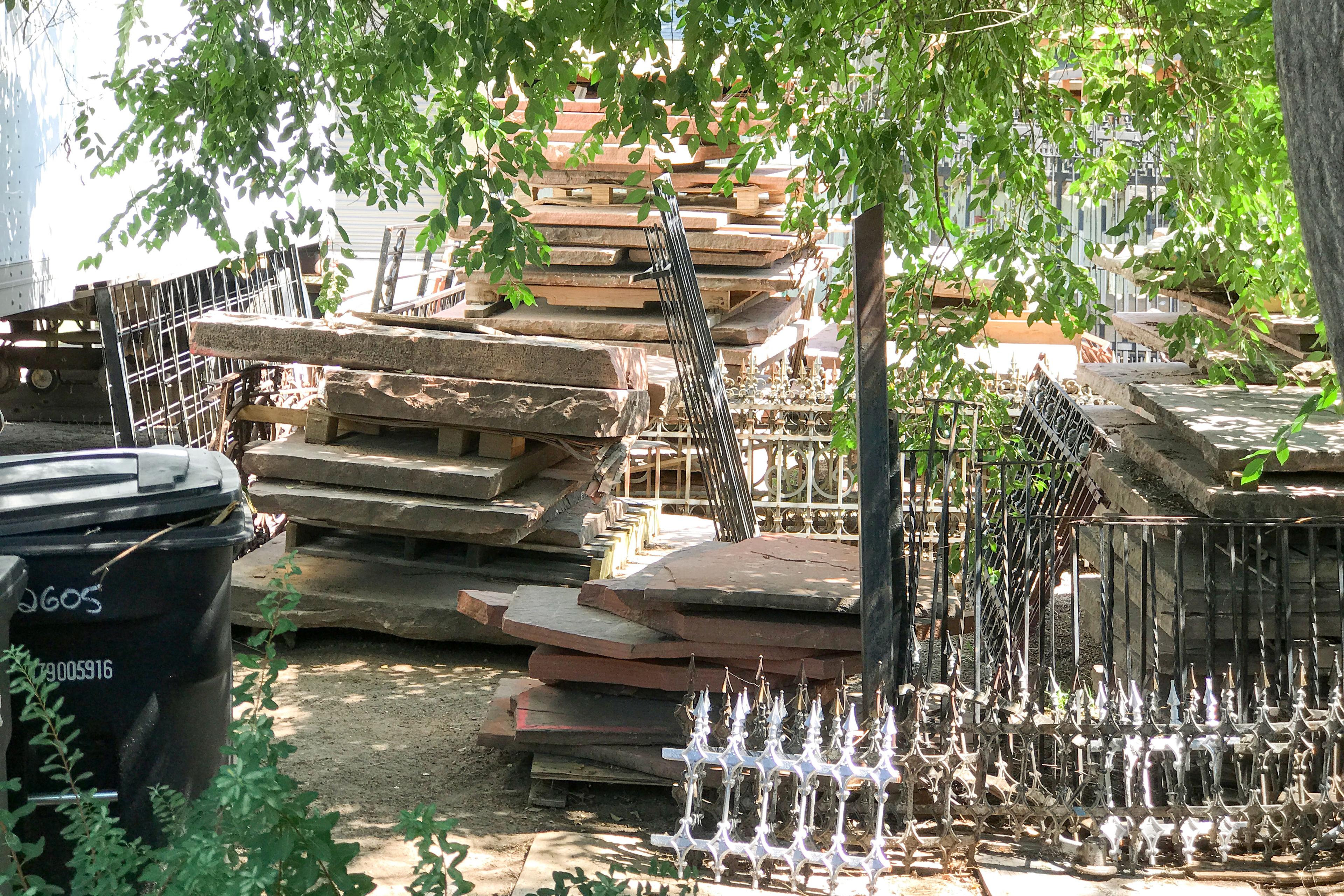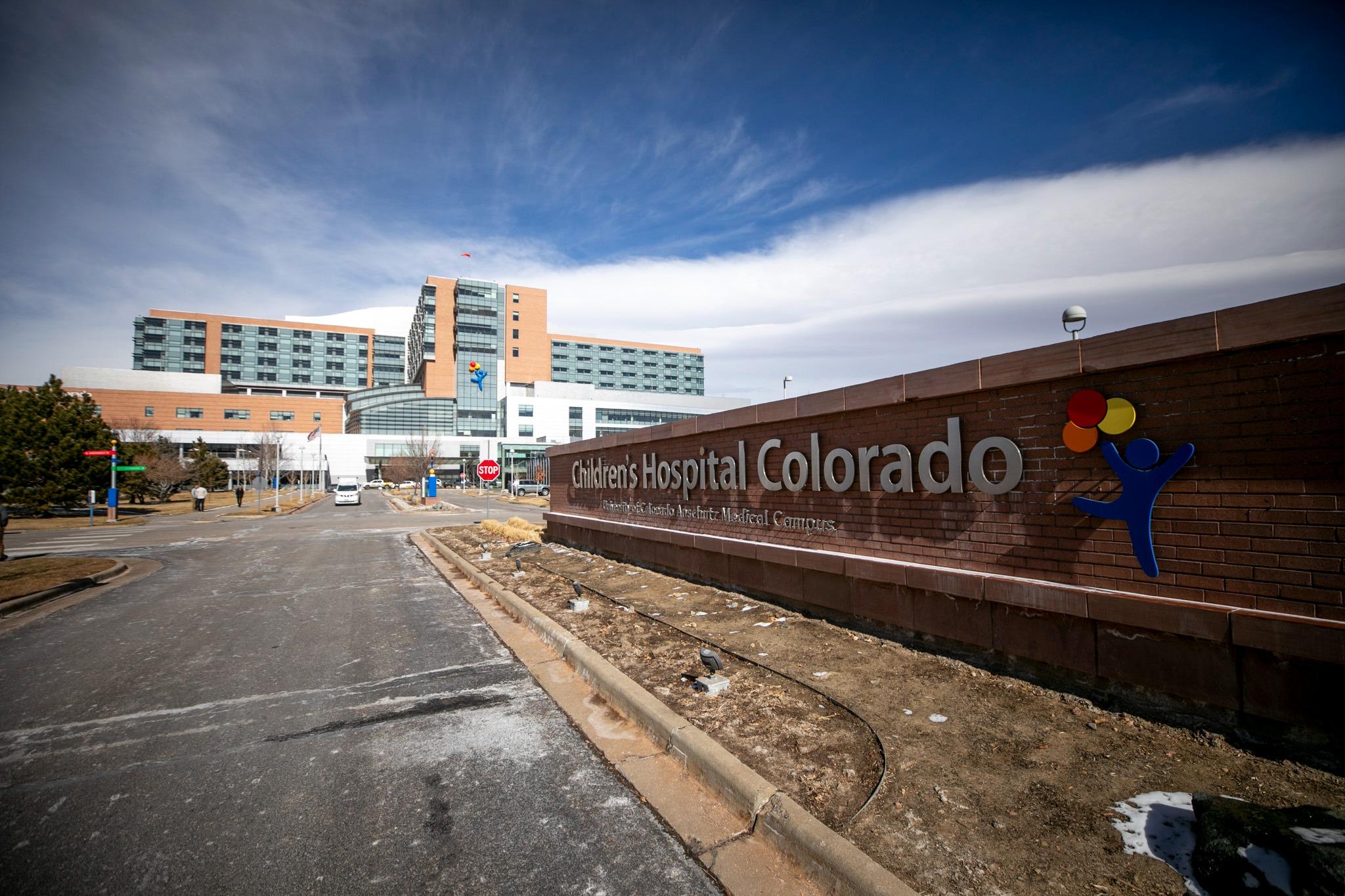

Much of Denver’s existing sidewalks are in disrepair and for the first time ever, the city has a plan to get things fixed. Over the next decade or so, instead of waiting for property owners to mend it, surveyors will hunt out hazardous sidewalks and report the damage. Once notified, homeowners will have 45 days to make the repairs, or the city will handle it and bill them.
In Mestizo-Curtis Park, Denver’s oldest neighborhood, this footpath fix-it plan worries leaders and advocates. More than 500 homes here are labeled historic, so they’re protected from demolition or any major changes — but those protections don’t extend to the flagstone sidewalks that were put in around the same time many of these homes were built.
The city’s $4.5 million repair program might mean the removal of a lot more flagstone, replacing it with concrete. Jeff Baker, vice president of Curtis Park Neighbors, and others want to keep that from happening. There’s already a flagstone rescue plan underway.

“We made [the city] aware that we are going to rent a forklift as a neighborhood and we are going to salvage all of it,” Baker said.
There’s a neighborhood lot that is home to a pile of rust-colored flagstone. Before the chunks and slabs were stacked here for storage, the stone spent more than a century as sidewalks. In addition to the preservation effort, Baker met with city officials to ask for a delay of inspections.
“We want to find out what’s actually laid down,” Baker said. “How many [slabs] are actually broken? And try to extrapolate a little data out to figure out what the real picture is of how much preserved flagstone is still in the neighborhood.”
Keeping The Character
Bill West has lived in the area for more than 40 years and is known as the local historian. In 1975, he and a preservationist were successful in getting Curtis Park on the National Register of Historic Places, but it did little to protect the buildings and houses.
More than 20 years later, West continued to fight for parts of the neighborhood to be granted protection under Denver’s Landmark ordinance. Now he believes the flagstone sidewalks should be considered part of the historic character.
“It would be a can of worms for the city. The city will probably oppose this,” West said. “We’ll see.”

Research is underway to argue the case, and West hopes for support from City Councilman Albus Brooks.
Councilman Paul Kashmann, the leader of the working group that came up with the sidewalk repair plan, understands the appeal to keep the flagstone. After all, there are elements of his community that he wants to persevere that to others “may not seem important.”
“Flagstone is the same thing,” Kashmann said. “I talk to people that live in other parts of the city that wonder why these communities with flagstone sidewalks are so up in arms. ... It’s an important part of their neighborhood context and I’m glad they’re concerned about it. I’m glad they’re fighting for it.”
The Need For Accessibility
Jamie Lewis, a wheelchair user and transportation advocate for the Colorado Cross-Disability Coalition, said some people don’t understand that a crack just two-inches wide can rip off one of his tires.
“I’ve fallen out of the chair probably three times in the last two years,” Lewis said. “And I’m pretty steady in the chair. But unfortunately, we have people with disabilities who are not as strong as I am, and they fall more often. … So, this is a safety issue.”
The disability community in Denver has been louder in the last few years about the importance of improved sidewalk conditions, Lewis said. Not only do sidewalks need to be fixed but also widened. For him, the “traditional five-foot sidewalk just doesn’t cut it anymore.”
Lewis doesn’t mind what the sidewalks are made of, if they’re kept in good condition. He’s glad the city will start to get involved.

“There are literally square blocks where there is either no curb cut, or the sidewalks are in such bad condition I can’t even go down those streets,” he said. “I don’t even have access to certain communities here in Denver.”
Flagstone Financial Impact
In an email, Nancy Kuhn, communications director for Denver Public wrote that preservation rights could lead to requirements for property owners to replace their damaged flagstone with new flagstone. Concrete would no longer be an option.
“I would anticipate the new requirement could impact more property owners to a greater extent financially,” Kuhn wrote.
Curtis Park Neighbors vice president Jeff Baker acknowledges the challenges that come with change. For him, the stockpiled flagstone could be used to help lower income families replace their broken stone or help keep them from having to choose less expensive concrete work.
Baker would like to see the city offer quotes on replacing the flagstone as it does with the concrete work. Currently, the city only offers to relevel the ground underneath intact slabs of flagstone. And the city can’t say which will be more affordable — re-leveling flagstone or removing it and replacing it with concrete.
Phillip Cano, a fourth-generation Mestizo-Curtis Park resident, runs a recording studio out of his home. Cano said he’s a contractor too and has worked with concrete.
“I’m going to be able to make it right,” Cano said of his sidewalk. “But some people in the neighborhood aren’t going to be able to make it right. And that’s just not right.”
The city’s program will offer discounts and payment plans to low income residents. The city estimates that repairs to most homes will cost less than $1,000 dollars.
The sidewalk outside of Cano’s home is flagstone, now broken into a bunch of pieces. He can’t save what he has, but he would like the city to give him options for a possible replacement.
“It took man hours and muscle of people 100 years ago to put each piece down,” Cano said. “That’s a memory that with every piece of concrete they put, they’re going to erase the memory of what they had before.”








